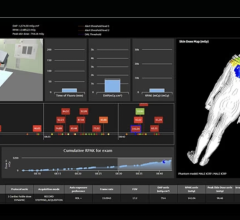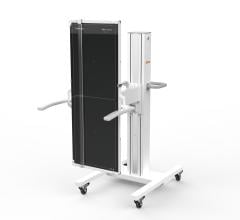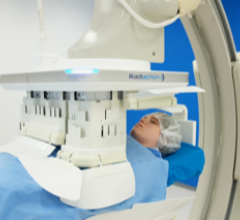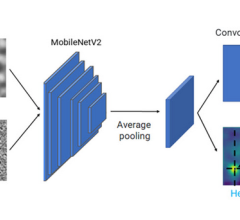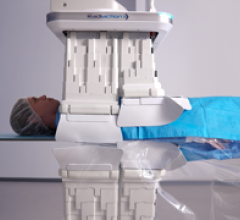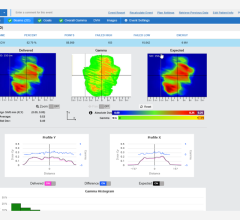
With more than 60 years of experience in the field of radiology, Zwanger-Pesiri is one of the largest non-hospital based radiology practices in the United States today. Its staff of 60 radiologists comprises a number of specialties including vascular imaging, interventional radiology, neuroradiology, musculoskeletal imaging, abdominal radiology, cardiovascular radiology and breast imaging.
With such a diverse and large patient base, and so many radiologists to manage, workflow is a key consideration, which is why the DX-D 300 DR system, with its cesium iodide detector technology and immediate image availability, was its solution of choice.
Workflow Rather Than Dose Reduction the Initial Driver
“We installed our first Agfa HealthCare DR solution, the DX-D 300, in our Elmont site in August of 2013,” said Mendelsohn. “We chose it primarily because the workflow was so efficient, it was very easy for the technologists to set up and the images were available quickly. At the time, Agfa HealthCare was telling me about its dose reduction capabilities, but, to be frank, I didn’t really believe them. But they kept on telling me about it so we decided to set up a study to compare the results.
“We had two competitive units from other suppliers available on the same site, so that provided the ideal opportunity to test out what we were being told,” he continued.
The Study Parameters
The study sought to determine if the DX-D 300 required less exposure and patient dose versus two other systems in use at Zwanger-Pesiri Radiology. It also compared the doses used to those used for similar examinations in other facilities, based on available published studies.1 It comprised PA chest, lateral skull and AP hand exposures taken on phantoms used to simulate patient exposures. In each case the phantom was positioned just as a patient would be and the standard exposure made.
Average Dose Reductions of 41 Percent Achieved
The results showed that while the amount varied depending on the type of exam, the average dose on most was 41 percent lower with the Agfa HealthCare system versus the other systems — an admittedly unexpected result for Zwanger-Pesiri.
“Much to my surprise, the DX-D 300 was able to provide high image quality at a lower dose. For me, that’s great in one way and possibly bad in another. It’s good because we can promote our commitment to dose reduction to our patients and now have the figures to prove it. But,” Mendelsohn added laughingly, “it could possibly be bad because Agfa HealthCare will want to raise the price we pay! Although, to be honest, I would be prepared to pay a little more for the level of dose reduction we achieved. Agfa HealthCare has done a really wonderful job with it.”
Dose Reduction has Become a Compelling Story
And dose reduction is a subject on which Mendelsohn believes patients are becoming increasingly well-informed. “Dose reduction has become a very compelling story; all radiologists need to be cognitive of patient dose and aware that patients are becoming better informed and will increasingly ask questions,” he stated. “But, change will ultimately be driven from the grassroots rather than by the radiologists themselves because our financial model does not currently place a premium on it.”
The Best of Both Worlds
Mendelsohn does acknowledge, however, that with the advent of cesium iodide phosphor detectors and MUSICA imaging processing software used as part of the DX-D 300 solution, Zwanger-Pesiri is now able to achieve the best of both worlds — significant dose reduction while still achieving the high quality images that radiologists have come to expect and are more comfortable working with.
“With so many sites and such a large population to serve, our biggest challenge is one of workflow,” said Jeanine Sartorelli, Zwanger-Pesiri’s chief technical officer. “To meet demand, we have a lot of teams that rotate across our sites, so ease of use when switching between solutions is paramount.”
A happy patient is Zwanger-Pesiri’s ultimate aim, as Sartorelli explained. “With the advent of Google and other information sites, patients are becoming more knowledgeable and more prepared to question their dose exposure. It’s great to be able to say that we are using the lowest possible dose for their images,” she said. “With the automation and accuracy offered by the DX-D 300 with cesium iodide detectors and MUSICA, we can speed them through the process and make it easier for referrers to access their information.
“Ultimately, it’s all about delivering better quality care for our patients,” she concluded.
Reference:
1. Osei, E and Darko, J. “A Survey of Organ Equivalent and Effective Doses from Diagnostic Radiology Procedures.” ISRN Radiology; Volume 2013, Article ID 204346, 9 pages http://dx.doi.org/10.5402/2013/204346.
Case study supplied by Agfa HealthCare.


 May 06, 2024
May 06, 2024 

